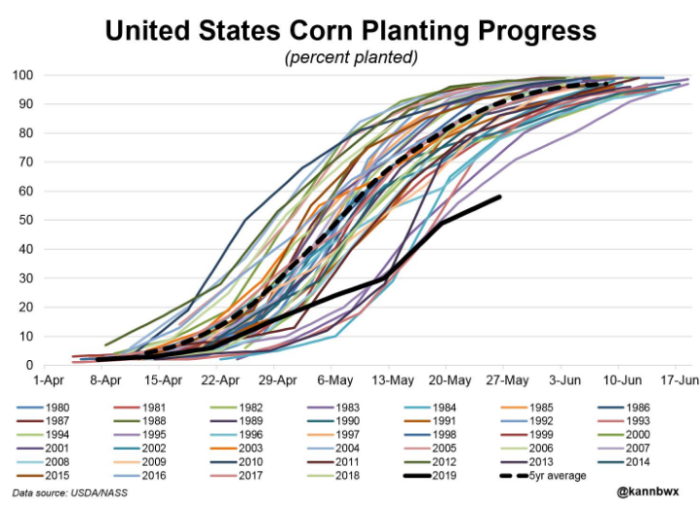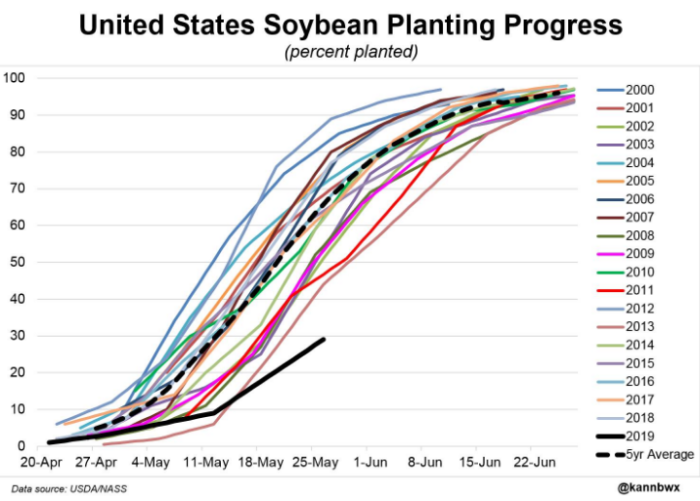The USDA (United States Department of Agriculture) brought an update on the progress of grain planting in the country late Monday afternoon and confirmed, for yet another week, the biggest delay in sowing in North American history. The numbers are well behind last year and the average of recent years.
Corn planting has been completed in only 58% of the area, compared to 90% in the same period last year and the average of the last five years. The number was considerably below market expectations, which were 63% to 65%.
One of the most backward states continues to be Illinois, which has only 35% of planted area, compared to 99% the previous year. Indiana has only 22%, compared to 94% in the same period of 2018.
Chart compares planting progress in recent years in the US – Source: Karen Braun
Soybean numbers are also worrying. The area planted is only 29%, compared to 74% last year, in the same period, and compared to the 66% average of the last five harvests. Expectations varied between 28% and 30% of the area.
As in the case of corn, Illinois and Indiana also attract attention, with planting in only 14% and 11%, respectively, while in 2018 they were 89% and 85%. On average, the two states were 70 and 63%.
Chart compares planting progress in recent years in the US – Source: Karen Braun
Also according to USDA figures, germination of both corn and soybeans also shows a significant delay in relation to previous seasons.
There are 32% of cereal crops that have already emerged, compared to 69% in 2018 and the average of the last five years. This week, the increase was 13 percentage points. Soybean crops are only 11%, compared to 44% in the same period last year, and 35% of the average of the last five years.
Adversity in the weather, especially excessive rainfall, continues to delay field work in the US. The coming days will also see heavy rainfall, tornadoes, severe winds and hail.
In response, the market reacted, with a sharp rise in prices on the Chicago Stock Exchange. This morning, soybean trading was recording gains of 30 cents/buschel in most maturities. November, for example, was at 9.13 cents at 4 a.m. (Brasília time).
March, a month of strong trading of the new Brazilian crop (2019/2020), remained above 9.30 c/b. With premiums above US$ 1.10 at Brazilian ports, soybeans (Chicago basis) exceeded US$ 10.40. July, with trading, US$ 9.46.6 announces a new milestone for the most cultivated and traded crop in the country.
According to analysts, a new cycle of high prices is beginning for grains.
Post | Marina Carvejani
Author | Notícias Agrícolas
Source | Notícias Agrícolas











